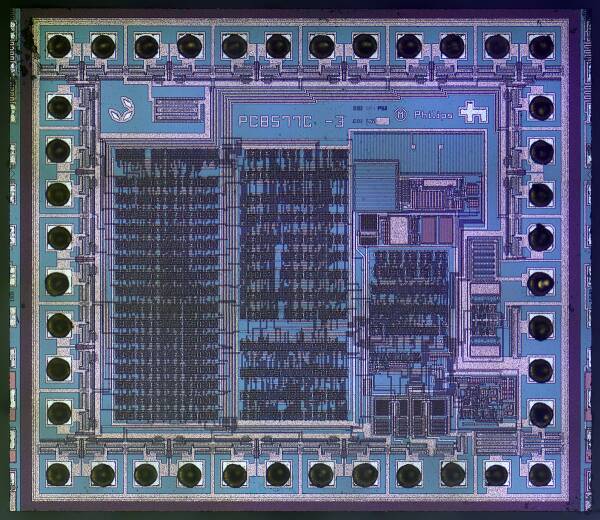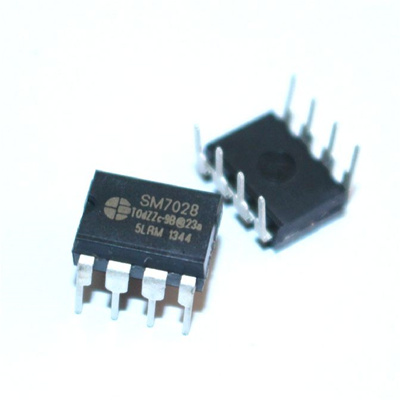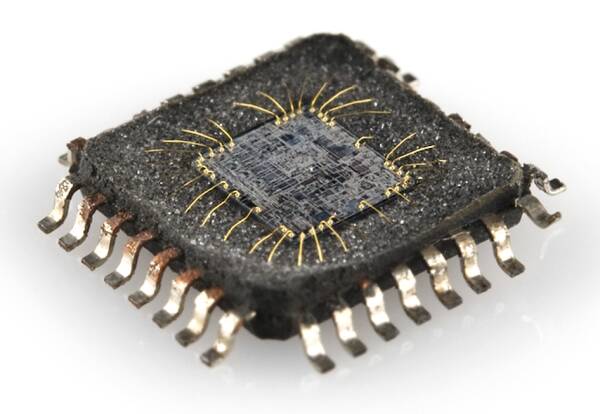Identifying Integrated Circuit (IC) chips is crucial for various reasons, ranging from troubleshooting to verification of authenticity. Here are seven common methods used to identify IC chips:

1. Part Number
- Description: The part number is the unique identifier assigned to each IC chip by the manufacturer.
- Use: Consulting the datasheet or manufacturer's documentation can help in identifying the chip based on its part number.
2. Markings on the Chip
- Description: IC chips often have markings such as logos, manufacturer codes, date codes, and other identifiers.
- Use: Deciphering these markings can provide clues about the manufacturer and sometimes the part number.
3. Package Type
- Description: The package type refers to the physical casing of the IC chip.
- Use: Identifying the package type can help narrow down the search for the specific chip based on its dimensions and pin configuration.
4. Datasheets
- Description: Datasheets provide detailed information about IC chips, including specifications, pinouts, and application notes.
- Use: Comparing the characteristics and pin configurations in datasheets can help in identifying the chip.
5. Manufacturer
- Description: Different manufacturers have their unique identifiers and characteristics in their IC chips.
- Use: Recognizing the manufacturer's brand or logo on the chip can aid in identification.
6. Online Databases and Search Engines
- Description: Websites and databases like Octopart, Digi-Key, or manufacturer websites offer tools to search based on various characteristics.
- Use: Inputting known features like part numbers, package types, or manufacturer codes can help locate specific IC chips.
7. Physical Inspection
- Description: Examining the physical characteristics of the IC chip, such as pin count, size, and package type.
- Use: Comparing these physical attributes with known information or datasheets can assist in narrowing down the probable identity of the chip.
Additional Tips:
- Consultation: Seeking advice from forums, electronics communities, or professionals who have experience in identifying IC chips can provide valuable insights.
- Specialized Tools: Utilizing magnifying glasses, microscopes, or chip decapsulation tools for a closer examination of the chip can reveal hidden markings and details.
By combining these identification methods, individuals can accurately determine the type, specifications, and manufacturer of IC chips for various applications, including repair, verification, and authentication purposes.
So what exactly is an ic chip?
An Integrated Circuit (IC) chip, often simply referred to as a chip, microchip, or silicon chip, is a miniature electronic circuit that consists of various electronic components (such as transistors, resistors, capacitors) interconnected on a small semiconductor material. These components are usually fabricated on a single piece of semiconductor material, typically silicon.
Key Points about IC Chips:
-
Miniaturization: IC chips are incredibly small and compact, allowing for complex circuits to be built within a small physical area.
-
Functionality: They can perform a wide range of functions, from simple amplification and switching to complex data processing and logic operations.
-
Digital and Analog Processing: IC chips can handle both digital and analog signals, making them versatile in many applications.
-
Packaging: IC chips are typically encapsulated in a protective housing that provides electrical connections and mechanical support.
-
Applications: IC chips are used in various electronic devices, ranging from smartphones and computers to medical equipment and automotive systems.
-
Customization: IC chips can be customized for specific applications, allowing manufacturers to tailor the circuitry to meet their requirements.
-
Manufacturing: The fabrication of IC chips involves complex processes, including photolithography, deposition, etching, and packaging.
-
Types: IC chips come in various types, such as microprocessors, memory chips, logic gates, amplifiers, and many more, each serving specific purposes in electronic systems.
-
Advancements: Over the years, IC technology has advanced rapidly, leading to smaller chips with increased functionality and efficiency.
Advantages of IC Chips:
-
High Reliability: IC chips have fewer individual components and connections, reducing the likelihood of failure.
-
Compactness: They enable the creation of complex circuits in a small space, facilitating the design of portable and space-efficient devices.
-
Power Efficiency: IC chips use energy efficiently, contributing to longer battery life in portable devices and reduced power consumption in larger systems.
-
Cost-Effective Mass Production: Once designed, IC chips can be mass-produced economically, making them cost-effective for a wide range of applications.
Overall, IC chips are fundamental to modern electronics and have revolutionized the way electronic devices are designed, manufactured, and utilized. Their compact size, versatility, and efficiency make them indispensable components in a wide array of technologies that define our modern world.

What are the classifications of ic chips?
Integrated circuit (IC) chips can be classified based on various criteria, including their functionality, fabrication technology, applications, and design complexity. Here are some common classifications of IC chips:
1. Based on Functionality:
-
Digital ICs: These chips operate with discrete logic levels (0s and 1s) and perform logical operations. Examples include microcontrollers, logic gates, and memory chips.
-
Analog ICs: Designed to process continuous signals and perform tasks like voltage amplification, filtering, and signal conditioning. Operational amplifiers, voltage regulators, and audio amplifiers are examples of analog ICs.
-
Mixed-Signal ICs: Combine both analog and digital functionalities on a single chip to facilitate communication between digital and analog components. ADCs (Analog-to-Digital Converters) and DACs (Digital-to-Analog Converters) are common examples.
2. Based on Fabrication Technology:
-
CMOS ICs: Complementary Metal-Oxide-Semiconductor ICs are widely used due to their low power consumption and high noise immunity.
-
Bipolar ICs: Utilize bipolar junction transistors for high-speed applications and precise analog performance.
3. Based on Applications:
-
Memory Chips: ROM (Read-Only Memory), RAM (Random Access Memory), and Flash memory chips fall under this category.
-
Microprocessors: Central processing units (CPUs) used in computers or embedded systems.
-
Communication ICs: Including chips for wireless communication, networking, and signal processing.
4. Based on Integration Level:
-
SSI (Small-Scale Integration): Containing a few logic gates or simple flip-flops.
-
MSI (Medium-Scale Integration): Combining several SSI circuits to create more complex functions like multiplexers or decoders.
-
LSI (Large-Scale Integration): Housing complex circuits like microprocessors, memory units, or digital signal processors (DSPs).
-
VLSI (Very Large-Scale Integration) and ULSI (Ultra-Large-Scale Integration): Incorporating millions to billions of transistors for high-performance applications like modern microprocessors and system-on-chip (SoC) designs.
5. Based on Package Type:
- DIP (Dual In-Line Package)
- QFP (Quad Flat Package)
- BGA (Ball Grid Array)
- SOP (Small Outline Package)
6. Based on Design Complexity:
- Standard Logic ICs: Basic logic gates and simple functions.
- Application-Specific ICs (ASICs): Custom-designed for specific applications.
- Programmable Logic Devices (PLDs): Configurable logic devices like FPGAs and CPLDs.
- System-on-Chip (SoC): Integrates multiple components on a single chip, including processors, memory, and peripherals.
These classifications help in understanding the diverse range of IC chips available in the market, each tailored for specific purposes based on their design, functionality, and application requirements.

Ic chip use and role
Integrated circuit (IC) chips play a vital role in modern electronics across a wide range of applications due to their compact size, efficiency, and versatility. Here are some key points outlining the use and role of IC chips:
1. Digital Logic Operations:
- Role: IC chips are fundamental components for performing logical operations in digital systems. They contain logic gates (AND, OR, NOT, etc.) that process binary data (0s and 1s) to carry out computations.
- Use: Used in microprocessors, memory units, and various digital circuits for tasks like arithmetic operations, data processing, and control functions in electronic devices.
2. Analog Signal Processing:
- Role: Analog ICs are essential for handling continuous signals such as audio, video, and sensor data. They provide functions like amplification, filtering, and signal conditioning.
- Use: Found in audio amplifiers, operational amplifiers, analog-to-digital converters, and other applications requiring precise signal manipulation.
3. Memory Storage:
- Role: Memory chips store and retrieve data in electronic devices. They come in various types like ROM, RAM, and Flash memory.
- Use: Crucial for storing program instructions, user data, and temporary information in devices ranging from smartphones and computers to embedded systems.
4. Microprocessor and Microcontroller Functionality:
- Role: Microprocessors and microcontrollers are ICs that act as the brain of electronic devices, executing instructions and managing operations.
- Use: Power devices such as computers, smartphones, IoT devices, automotive systems, and industrial automation by processing data and controlling functions.
5. Communication and Networking:
- Role: Communication ICs facilitate wireless communication, network connectivity, and data transmission within electronic systems.
- Use: Enable functions like Wi-Fi, Bluetooth, Ethernet networking, cellular communication, and signal processing in devices like routers, modems, smartphones, and IoT devices.
6. Power Management:
- Role: Power ICs regulate and manage power distribution within electronic systems to ensure efficient and reliable operation.
- Use: Found in voltage regulators, power converters, battery management systems, and power amplifiers in devices requiring stable power supply and energy efficiency.
7. Customized Applications:
- Role: Application-Specific ICs (ASICs), Programmable Logic Devices (PLDs), and System-on-Chip (SoC) offer tailored solutions for specific applications.
- Use: Customized ICs are designed for specialized functions like automotive control systems, medical devices, aerospace applications, and consumer electronics to meet unique requirements efficiently.
8. System Integration:
- Role: Very Large-Scale Integration (VLSI) and Ultra-Large-Scale Integration (ULSI) ICs integrate millions to billions of transistors on a single chip for complex system functionalities.
- Use: Power high-performance devices like advanced microprocessors, GPUs, SoCs, and memory chips used in computing, communication, and digital systems.
The versatile nature of IC chips enables them to serve as essential building blocks in electronic design, providing the processing power, memory storage, signal manipulation, and control functions required in modern electronics across a diverse range of applications.

How to judge whether the ic chip is good or bad
Judging whether an IC chip is good or bad involves a series of steps and considerations to assess its condition and functionality. Here are some common methods to determine the quality and performance of an IC chip:
Visual Inspection:
- Physical Damage: Check the chip for any visible signs of physical damage like cracks, burns, or corrosion.
- Pin Alignment: Ensure that the pins are aligned properly and not bent or damaged.
- Package Condition: Inspect the package for any signs of discoloration, warping, or irregularities.
Testing Methods:
-
Functional Testing:
- Using IC Testers: Specialized IC testers can verify the functionality of the chip by inputting test signals and checking the output.
- In-Circuit Testing: Test the chip within the circuit to assess its functionality in the system.
-
Power Supply Testing:
- Voltage Checks: Measure the voltage levels on the chip to ensure they are within the specified range.
- Current Draw: Monitor the current consumption to identify any abnormal behavior that might indicate a fault.
-
Signal Testing:
- Input and Output Signals: Verify that the chip is responding correctly to input signals and producing the expected output.
- Communication Protocols: Test communication ICs with the appropriate protocols to confirm proper data transmission.
Performance Evaluation:
-
Speed and Timing:
- Clock Signals: Verify the clock signals to ensure that the chip is operating at the correct frequency.
- Timing Analysis: Evaluate the timing specifications to check if the chip meets the required timing constraints.
-
Temperature Testing:
- Thermal Stress Testing: Subject the chip to varying temperatures to assess its performance under different thermal conditions.
- Thermal Imaging: Use a thermal camera to identify hotspots or areas of excessive heat on the chip.
Data Sheet Comparison:
- Parameter Verification:
- Compare the chip's performance characteristics with the values specified in the datasheet to ensure they match.
- Confirm that the operating conditions (voltage, temperature, etc.) align with the chip's specifications.
Reputable Sources:
- Vendor Verification:
- Purchase IC chips from reputable vendors or authorized distributors to ensure authenticity and quality.
- Verify the manufacturer's markings and labels to confirm the legitimacy of the chip.
Troubleshooting Steps:
- Replacement Testing:
- Swap the chip with a known good one to determine if the issue lies with the IC itself or elsewhere in the system.
- Use a process of elimination by testing individual components to identify the root cause of any problems.
By combining visual inspection, testing methods, performance evaluation, data sheet comparison, and sourcing from reliable vendors, you can effectively judge whether an IC chip is good or bad and determine its suitability for use in electronic systems.



